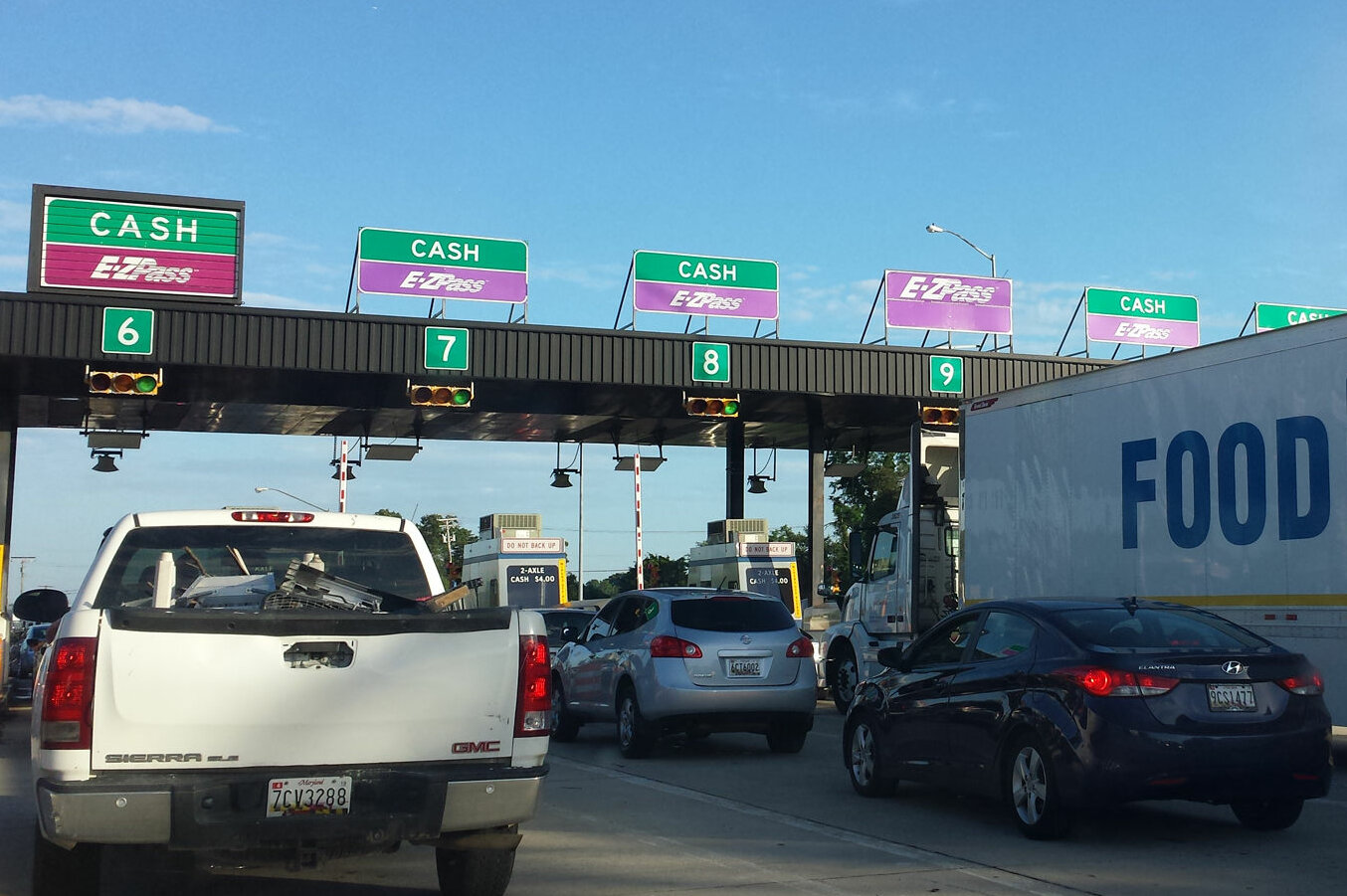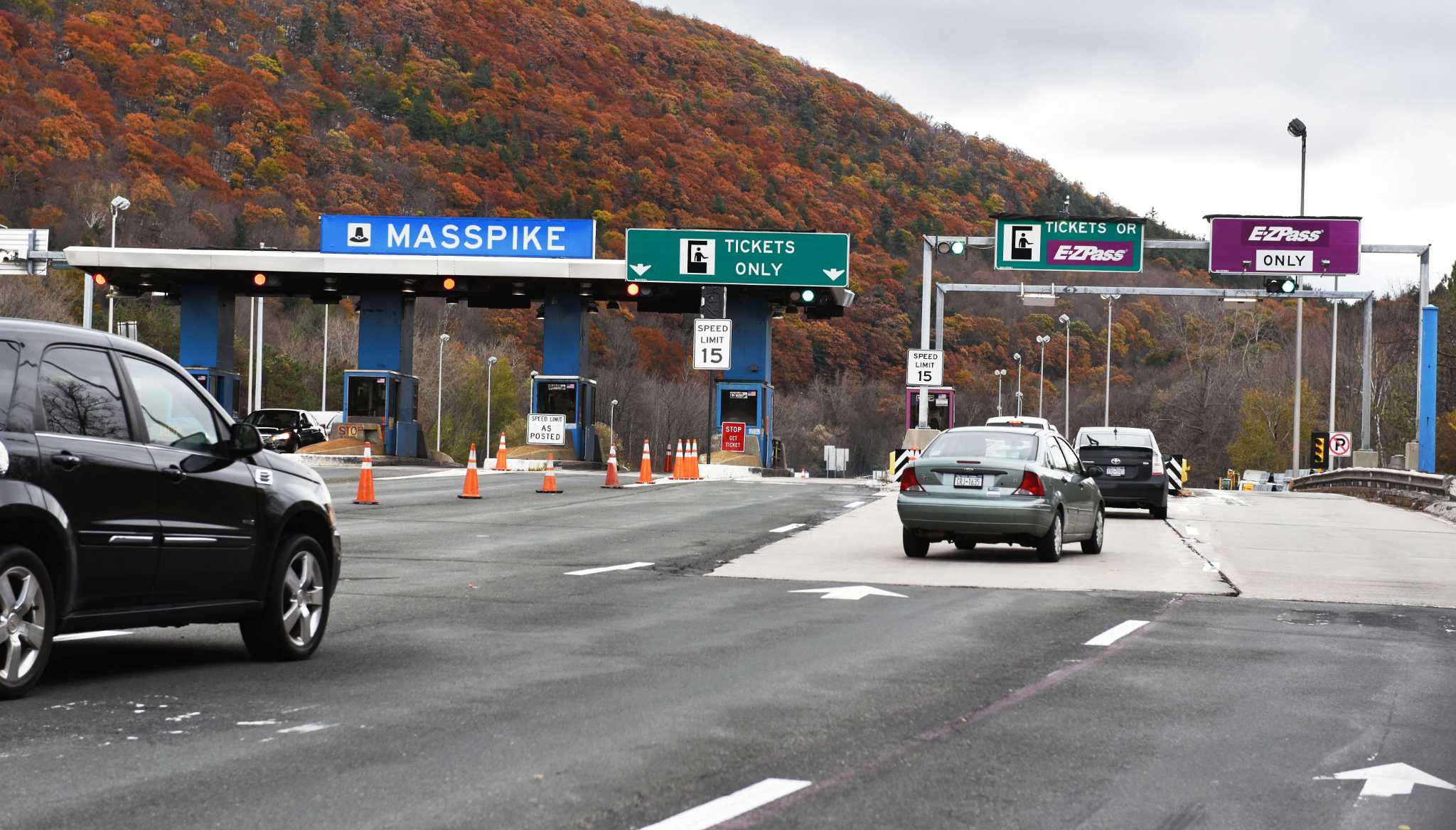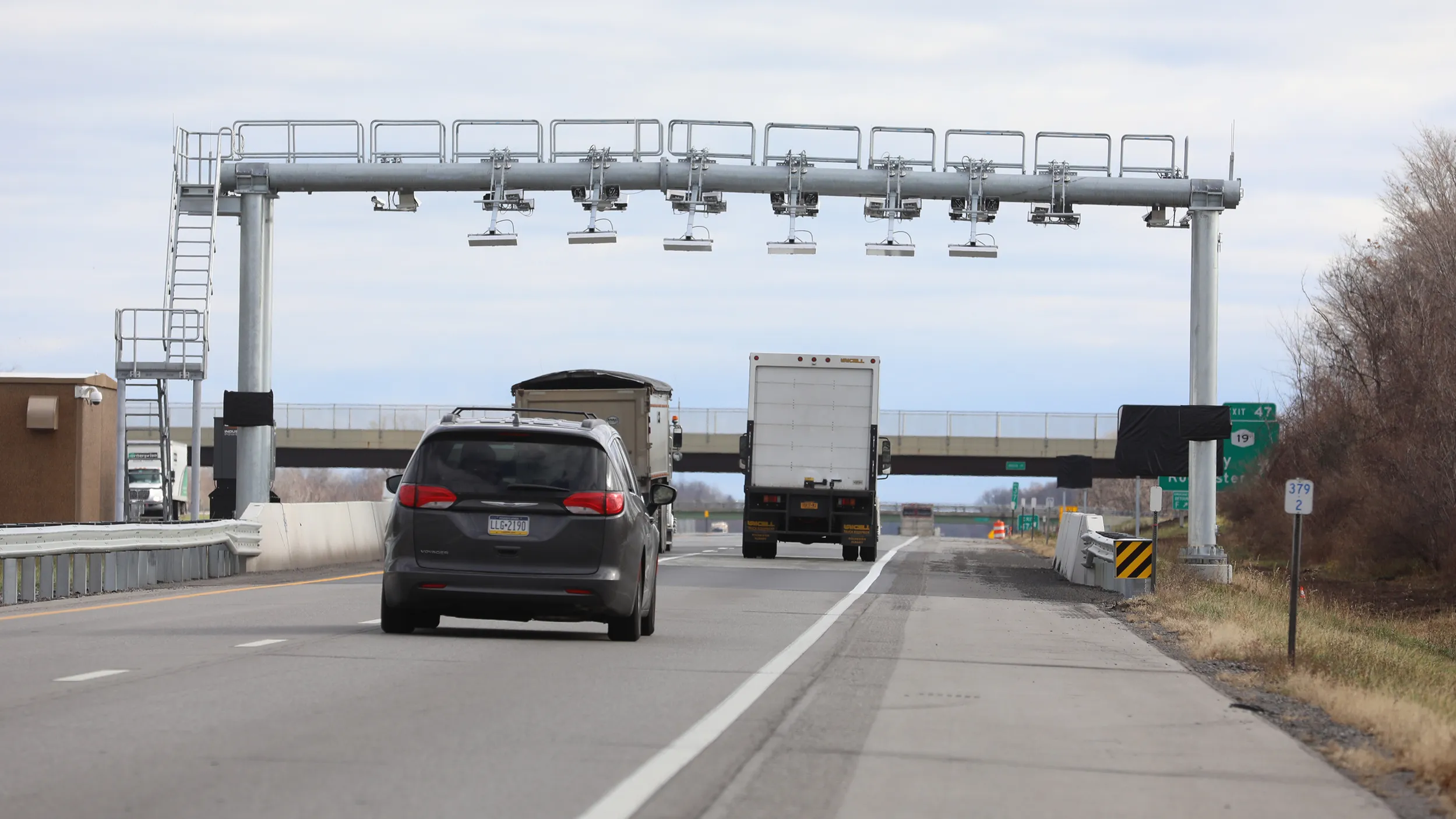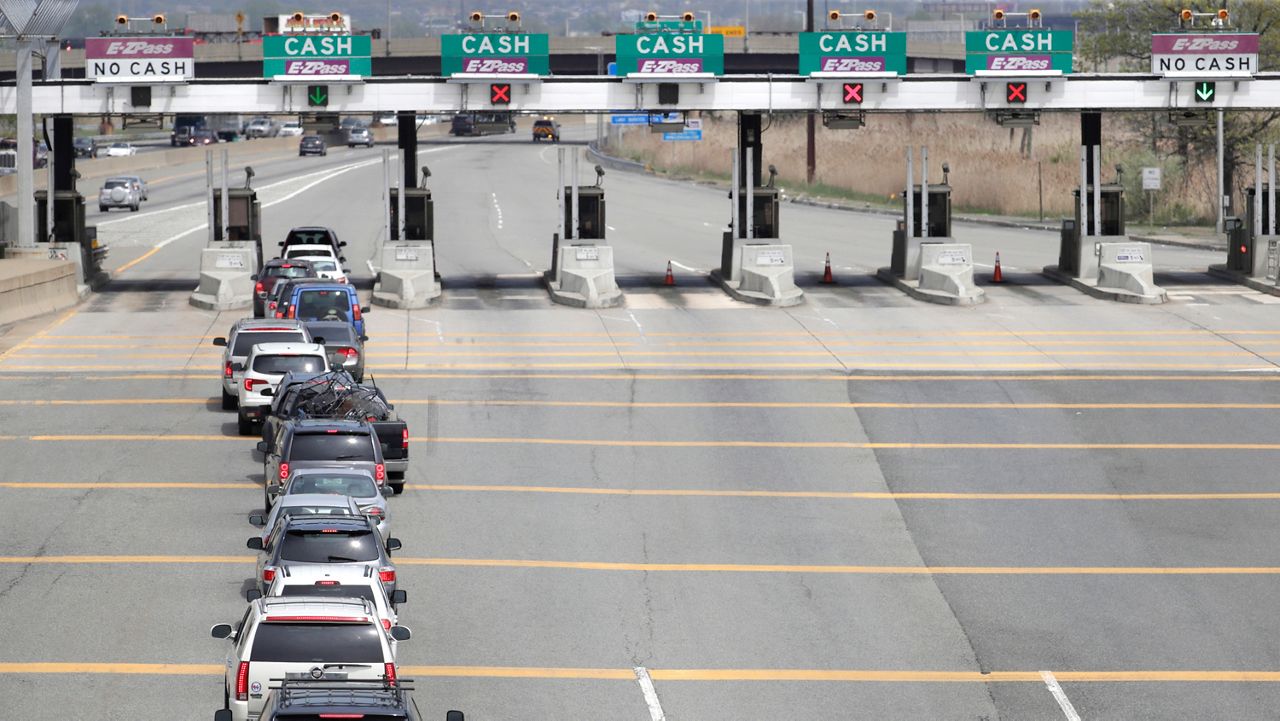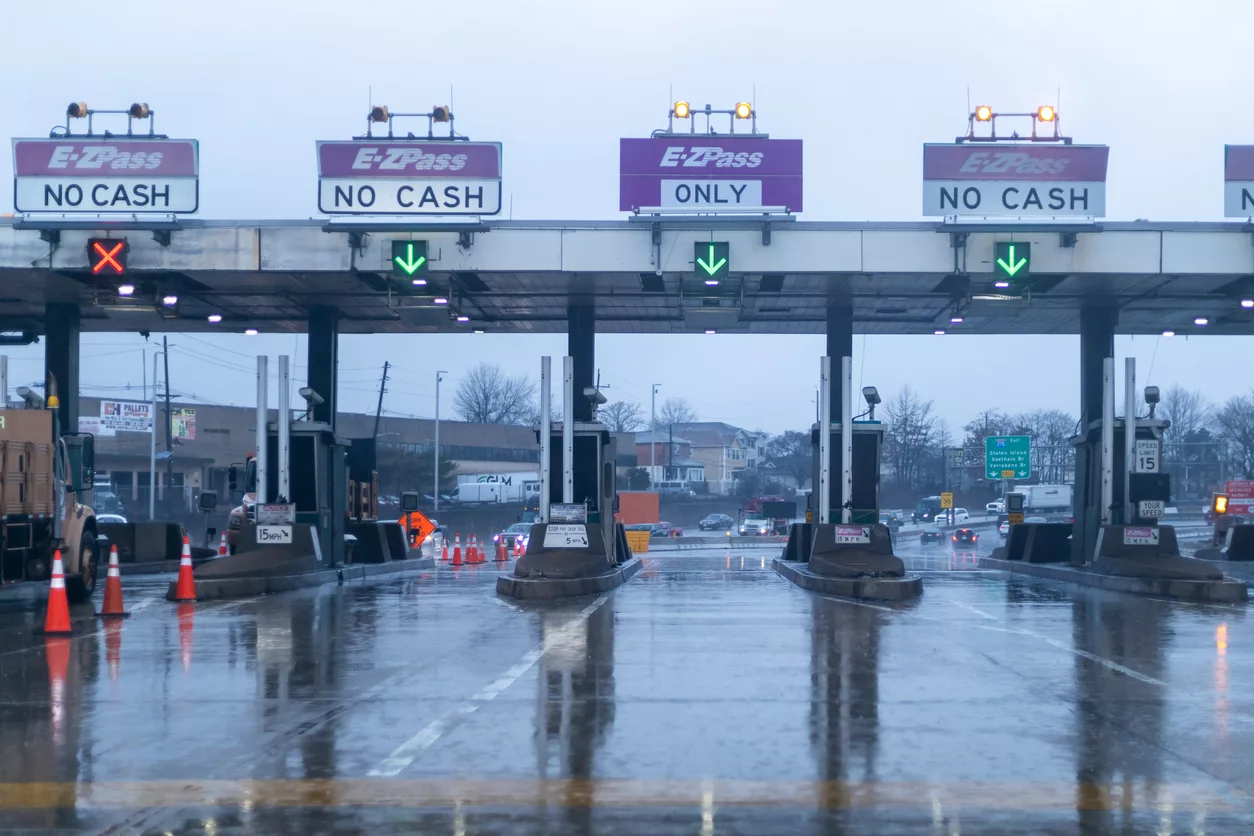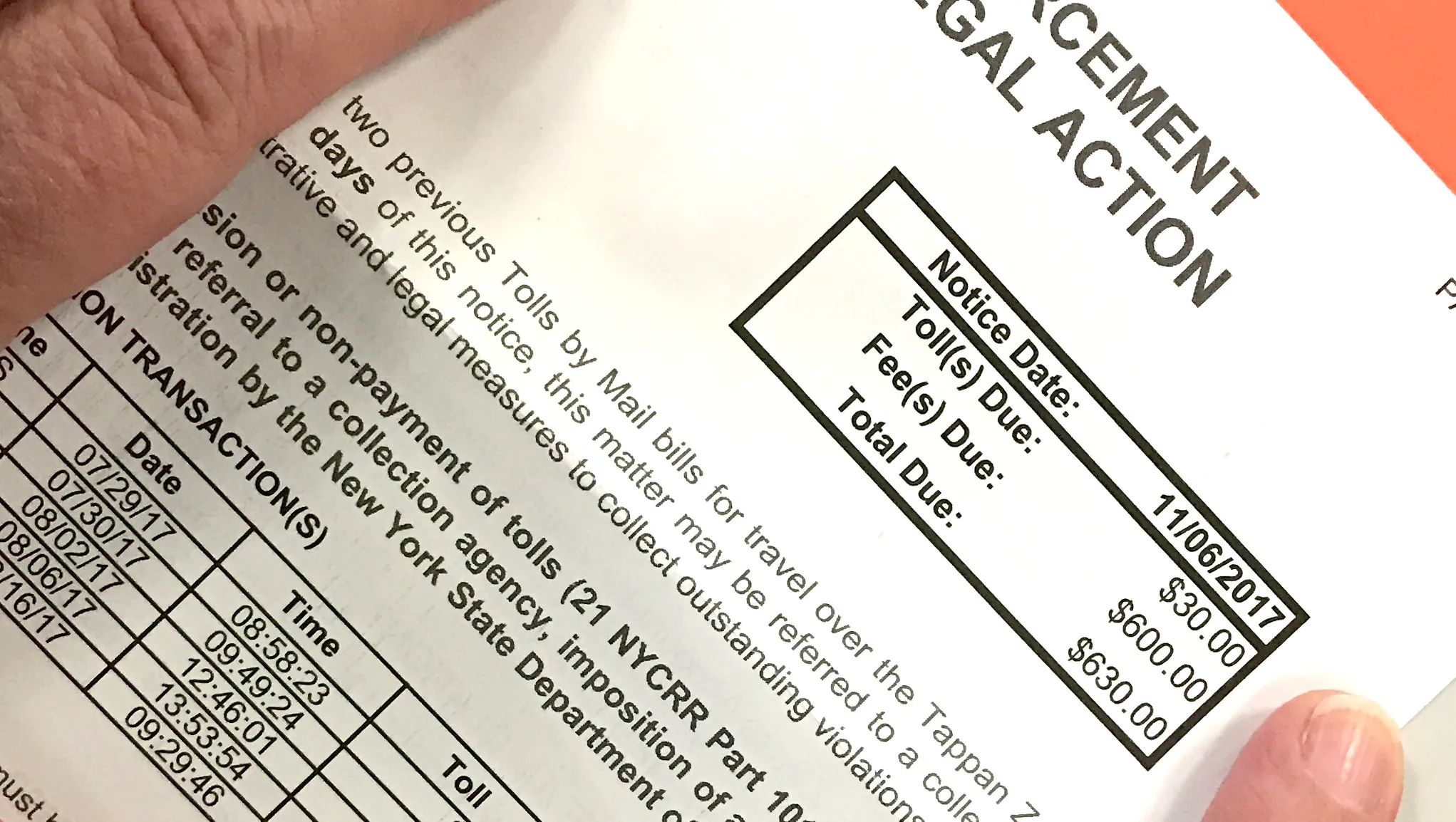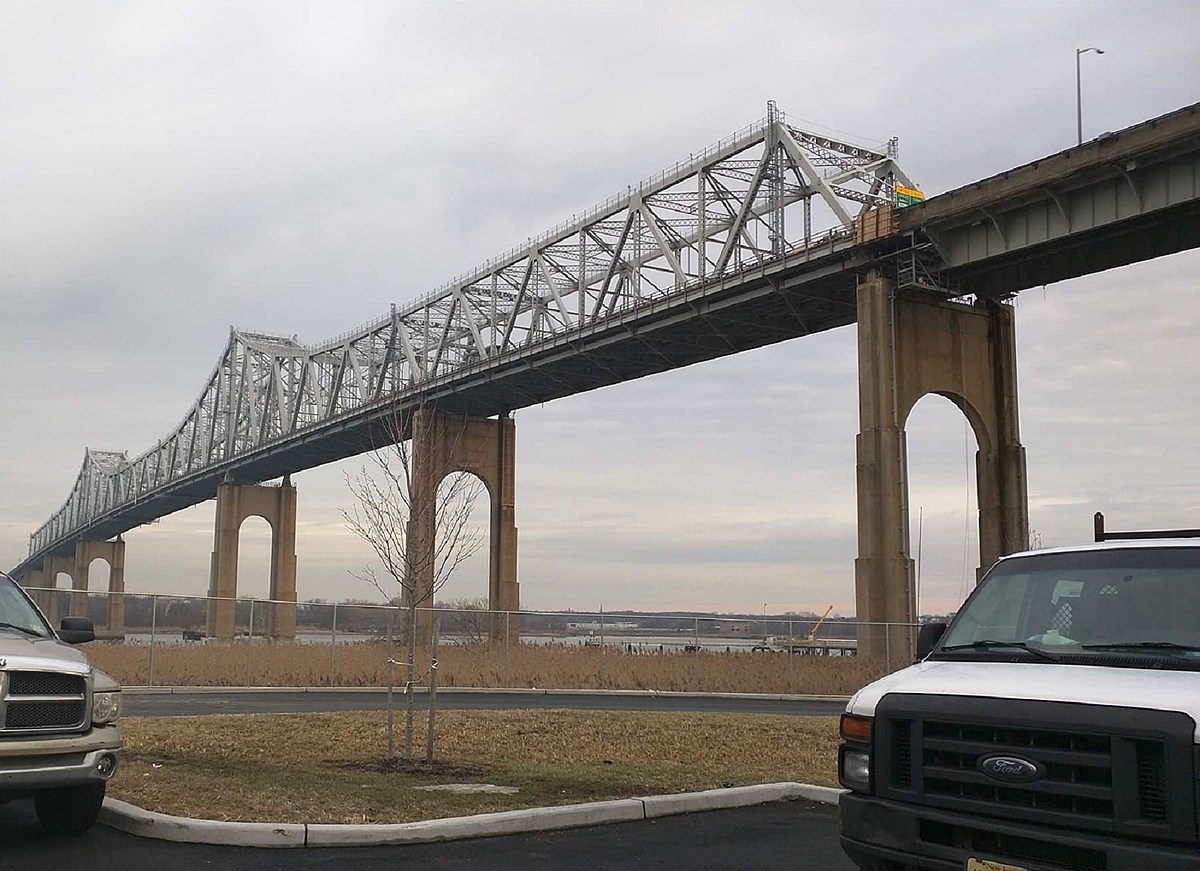Introduction
Cashless tolls have become increasingly prevalent across the United States, including in the state of Maryland. Gone are the days of digging for coins or fumbling for cash to pay tolls on highways and bridges. With cashless tolls, drivers can enjoy the convenience of seamless travel without the need for physical currency. In this article, we will explore what cashless tolls are, why they are being implemented in Maryland, and how you can easily pay for them.
Traditionally, toll booths have been a common sight on highways, where drivers would pay tolls in cash or with a standard toll ticket. However, cashless tolls have emerged as a more efficient and convenient alternative. Cashless tolls utilize electronic systems to collect tolls, eliminating the need for physical payment and reducing traffic congestion. They provide a faster and smoother experience for travelers, allowing them to breeze through toll points without stopping and wasting precious time.
In Maryland, the implementation of cashless tolls is driven by various factors. One of the main reasons is to improve traffic flow and reduce congestion at toll plazas. Cashless tolls offer a seamless and streamlined process, reducing the time spent at toll booths and minimizing delays. Additionally, cashless tolls improve safety on roads by reducing the risk of accidents caused by abrupt stops or slowed traffic at toll plazas.
Furthermore, cashless tolls offer environmental benefits by reducing emissions from idling vehicles waiting at toll booths. With the implementation of electronic tolling systems, vehicles can flow smoothly, reducing fuel consumption and air pollution. This aligns with Maryland’s commitment to environmental sustainability and creating a greener transportation system.
In the following sections, we will delve into the different types of cashless tolling options available in Maryland, such as E-ZPass and Pay-By-Plate. We will also discuss how to obtain an E-ZPass and provide step-by-step instructions on how to use it for cashless toll payments. Whether you are a local commuter or an out-of-state traveler, understanding how to navigate the cashless tolling system in Maryland will make your journey more convenient and hassle-free.
What are cashless tolls?
Cashless tolls, also known as electronic toll collection (ETC) systems, are a modern method of collecting tolls without the need for physical currency or toll booths. Instead of stopping at a toll booth and paying with cash or a ticket, cashless tolling uses electronic devices and automatic recognition systems to collect toll payments.
When you pass through a cashless toll point, your vehicle’s license plate or an electronic transponder, such as an E-ZPass, is scanned. The toll payment is then automatically deducted from your account, avoiding the need to physically exchange money or tokens. This allows for a seamless and uninterrupted flow of traffic, reducing congestion and improving efficiency on highways and bridges.
In cashless tolling systems, there are typically two main methods of payment: E-ZPass and Pay-By-Plate.
E-ZPass is an electronic toll payment system used in many states across the United States, including Maryland. It consists of a small electronic transponder that is affixed to the windshield of your vehicle. The transponder communicates with the toll collection infrastructure, allowing for automatic payment of tolls as you drive through designated E-ZPass lanes. The toll amount is deducted from the prepaid balance in your E-ZPass account.
Pay-By-Plate, on the other hand, is a system that utilizes the vehicle’s license plate as a means of identification for toll payment. When you pass through a cashless toll point without an E-ZPass transponder, cameras capture an image of your license plate. The system then matches the license plate to the registered owner’s information and sends a toll invoice to the address on file. This allows drivers without an E-ZPass to still use cashless toll lanes and receive an invoice for payment.
Overall, cashless tolls provide numerous benefits for both drivers and transportation authorities. They reduce traffic congestion, enhance safety on the road, and improve the overall efficiency of toll collection. By eliminating the need for physical currency and toll booths, cashless tolls offer convenience and convenience to drivers, making their journeys smoother and more enjoyable.
Why are cashless tolls being implemented in Maryland?
The implementation of cashless tolls in Maryland is driven by several key factors that aim to improve the overall transportation system and enhance the travel experience for drivers. Some of the main reasons why cashless tolls are being implemented in the state include:
1. Improved Traffic Flow: Cashless tolls offer a more streamlined and efficient way of collecting tolls, reducing the time spent at toll plazas and minimizing traffic congestion. With traditional toll booths, drivers would often have to stop and wait in line, leading to backups and delays. Cashless tolls eliminate the need for these physical barriers, allowing vehicles to seamlessly pass through toll points without slowing down.
2. Enhanced Safety: Cashless tolling systems contribute to improved safety on roads by reducing the risk of accidents caused by abrupt stops or slowed traffic at toll plazas. With the elimination of toll booths, drivers can maintain a steady flow of traffic, reducing the likelihood of rear-end collisions and improving overall road safety.
3. Environmental Benefits: Cashless tolls align with Maryland’s commitment to environmental sustainability. By eliminating the need for vehicles to idle or slow down at toll booths, cashless tolling reduces fuel consumption and emissions. This contributes to a greener transportation system by minimizing air pollution and conserving natural resources.
4. Cost Efficiency: Cashless toll systems can be more cost-effective in the long run. While implementing these systems initially requires an investment in infrastructure, there are long-term savings associated with the maintenance and operation of toll booths. Additionally, cashless tolls reduce the need for toll booth personnel, further reducing labor costs.
5. Convenience for Drivers: Cashless tolling offers convenience and ease of use for drivers. With the use of devices like E-ZPass or the Pay-By-Plate system, drivers no longer need to carry cash or worry about finding exact change at toll plazas. The electronic payment system allows for seamless travel, enhancing the overall experience for drivers.
Overall, the implementation of cashless tolls in Maryland is aimed at improving traffic flow, increasing safety, reducing environmental impact, and providing convenience for drivers. By transitioning to electronic toll collection systems, the state can create a more efficient and sustainable transportation infrastructure, benefiting both commuters and the environment.
Different types of cashless tolls in Maryland
In Maryland, there are two main types of cashless toll options available: E-ZPass and Pay-By-Plate. Let’s explore each of these options in more detail:
E-ZPass: E-ZPass is an electronic toll collection system used in many states across the United States, including Maryland. It consists of a small electronic transponder that is affixed to the windshield of your vehicle. The transponder communicates with the toll collection infrastructure, allowing for automatic payment of tolls as you drive through designated E-ZPass lanes. The toll amount is deducted from the prepaid balance in your E-ZPass account. E-ZPass is widely accepted in Maryland and can be used on all toll roads, bridges, and tunnels in the state as well as in other participating E-ZPass states.
Pay-By-Plate: Pay-By-Plate is a cashless tolling option for drivers who do not have an E-ZPass transponder. It utilizes camera technology to capture images of license plates as vehicles pass through cashless toll points. The system then matches the license plate to the registered owner’s information and generates an invoice for the toll amount. The invoice is sent to the address on file for payment. Pay-By-Plate provides a convenient option for drivers who do not frequently use toll roads or who prefer not to obtain an E-ZPass.
Both E-ZPass and Pay-By-Plate offer advantages in terms of convenience and efficiency. E-ZPass allows for seamless travel through toll points, with tolls automatically deducted from your account. It eliminates the need to stop or fumble for cash, making your journey smoother and more streamlined. Pay-By-Plate, on the other hand, provides a flexible payment option for drivers who do not have an E-ZPass. It allows you to use cashless toll lanes and receive a bill to pay at a later date.
It’s important to note that using an E-ZPass can save you money in some cases, as toll rates for E-ZPass users are often lower compared to Pay-By-Plate rates. Additionally, having an E-ZPass can also provide you with access to exclusive discounts and promotions for various transportation services and facilities.
Whether you choose to use E-ZPass or opt for Pay-By-Plate, both options offer a convenient and efficient way to pay cashless tolls in Maryland. Consider your travel needs and frequency to determine which option is the best fit for you.
E-ZPass
E-ZPass is an electronic toll payment system used in many states across the United States, including Maryland. It offers a convenient and efficient way for drivers to pay for cashless tolls without the need for physical currency or stopping at toll booths.
With E-ZPass, drivers can enjoy the benefits of seamless travel and reduced wait times at toll points. The system uses a small electronic transponder that is affixed to the windshield of your vehicle. This transponder communicates with the toll collection infrastructure, allowing for automatic payment of tolls as you drive through designated E-ZPass lanes.
Obtaining an E-ZPass in Maryland is a straightforward process. You can apply for an E-ZPass online through the official Maryland E-ZPass website or by visiting a customer service center. The application requires basic information such as your name, address, and vehicle details. Once your application is processed, you will receive your E-ZPass transponder in the mail.
Adding funds to your E-ZPass account is simple and can be done through various methods. You can choose to link a credit or debit card to your account for automatic balance replenishment, set up automatic payments, or manually add funds when needed. The prepaid balance in your E-ZPass account is used to pay for tolls as you pass through cashless toll points.
When traveling through cashless toll lanes, look for signs indicating E-ZPass or electronic toll collection. You can identify E-ZPass lanes by the distinctive purple E-ZPass logo displayed overhead. As you approach the toll point, make sure your E-ZPass transponder is properly mounted on your windshield to ensure accurate detection. The toll amount will be automatically deducted from your prepaid balance, and you can continue your journey without the need to stop or exchange money.
In addition to toll roads, bridges, and tunnels in Maryland, E-ZPass is accepted in other participating states as well. This means you can use your E-ZPass for toll payment in states such as Delaware, Virginia, and Pennsylvania, among others.
Having an E-ZPass offers numerous benefits. In addition to the convenience and time saved by avoiding toll booths, E-ZPass users often benefit from discounted toll rates. Many toll facilities offer lower rates for E-ZPass users as an incentive to promote electronic toll collection. E-ZPass also provides access to exclusive discounts and promotions for various transportation services and facilities.
Whether you are a frequent traveler or an occasional user of toll roads in Maryland, having an E-ZPass can significantly enhance your travel experience. It eliminates the hassle of carrying cash or searching for exact change and ensures a smooth and efficient journey through cashless toll points.
Pay-By-Plate
Pay-By-Plate is a cashless tolling option available in Maryland for drivers who do not have an E-ZPass transponder. It provides a convenient and flexible way to pay for tolls without the need for physical currency or stopping at toll booths.
With Pay-By-Plate, toll payment is based on the vehicle’s license plate. When you pass through a cashless toll point without an E-ZPass transponder, cameras capture an image of your license plate. The system then matches the license plate to the registered owner’s information and generates an invoice for the toll amount. The invoice is sent to the address on file and provides instructions on how to make the payment.
Using Pay-By-Plate is simple and does not require any registration or upfront payment. As a driver, you can use cashless toll lanes without the need for an electronic transponder. This option is particularly useful for occasional toll road users or visitors to Maryland who might not have an E-ZPass account.
When driving through cashless toll lanes, look for signs indicating Pay-By-Plate or license plate tolling. These lanes are equipped with cameras that capture images of license plates as vehicles pass through. It’s important to ensure that your license plate is clean and clearly visible to facilitate accurate detection and toll invoicing.
After passing through a cashless toll point, you will receive an invoice at the registered address of the vehicle’s owner. The invoice will include details of the toll charges and instructions on how to make the payment. Payment options typically include online payment, mail-in payment, or phone payment, depending on the specific payment processor used by the tolling agency.
It’s crucial to promptly pay the toll invoice to avoid any penalties or additional fees. Failure to pay the invoice within the specified timeframe may result in additional charges or the issuance of a violation notice. It’s recommended to carefully review the invoice and follow the provided instructions to ensure timely payment.
While Pay-By-Plate provides a convenient option for drivers without an E-ZPass, it’s important to note that toll rates for Pay-By-Plate users are often higher than those for E-ZPass users. Therefore, if you are a frequent user of toll roads in Maryland, it may be more cost-effective to consider obtaining an E-ZPass for discounted toll rates.
Overall, Pay-By-Plate offers a flexible and easy-to-use option for drivers who do not have an E-ZPass. It allows you to travel through cashless toll lanes without the need for an electronic transponder, making it a convenient choice for occasional toll road users or visitors to Maryland.
How to obtain an E-ZPass in Maryland
Obtaining an E-ZPass in Maryland is a simple and straightforward process. Follow these steps to get your E-ZPass and enjoy the convenience of cashless toll payments:
1. Visit the Maryland E-ZPass website: Start by visiting the official Maryland E-ZPass website. Here, you will find all the information you need to apply for an E-ZPass and manage your account.
2. Choose your account type: Select the type of E-ZPass account that best suits your needs. There are different account options available, including individual, business, and commercial accounts. Ensure you choose the appropriate account type based on your usage and requirements.
3. Gather the necessary information: Before applying for an E-ZPass, make sure you have all the required information on hand. This may include your driver’s license, vehicle registration information, and payment method details.
4. Complete the application form: Fill out the online application form, providing accurate and up-to-date information. Make sure to double-check all the details before submitting the application.
5. Pay the required fees: There may be initial fees associated with obtaining an E-ZPass in Maryland. You will need to make the required payment using a credit or debit card during the application process. The fees may vary depending on your account type and any promotional offers available at the time.
6. Receive your E-ZPass transponder: Once your application is processed and approved, you will receive your E-ZPass transponder in the mail. The transponder is a small electronic device that needs to be properly mounted on your windshield according to the provided instructions.
7. Activate your E-ZPass: Before using your E-ZPass, you will need to activate it. You can do this by logging into your E-ZPass account online or by calling the provided activation number. Follow the instructions to complete the activation process.
8. Set up automatic replenishment: To ensure a seamless experience, consider setting up automatic replenishment for your E-ZPass account. This allows funds to be automatically added to your account when the balance gets low, ensuring you always have sufficient funds for toll payments.
9. Start using your E-ZPass: With your E-ZPass transponder mounted on your windshield and the account activated, you are ready to start using it for cashless toll payments in Maryland. Simply drive through designated E-ZPass lanes, and tolls will be automatically deducted from your prepaid account balance.
Remember to periodically check your E-ZPass account balance, update any changes to your vehicle or personal information, and ensure your transponder is in working condition. This will ensure a smooth and hassle-free experience when using E-ZPass for cashless toll payments.
How to add funds to your E-ZPass account
Once you have obtained an E-ZPass in Maryland, it’s important to ensure that your account has sufficient funds to cover the toll payments. Adding funds to your E-ZPass account is a simple process. Here’s how you can do it:
1. Log in to your E-ZPass account: Access your E-ZPass account by visiting the Maryland E-ZPass website. Log in using your account credentials, such as your username and password.
2. Navigate to the “Add Funds” section: Once logged in, locate the “Add Funds” or “Replenish Account” section within your account dashboard. The exact location and wording may vary based on the E-ZPass website interface.
3. Choose your payment method: Select the preferred payment method for adding funds. Most E-ZPass systems accept credit cards, debit cards, or electronic fund transfers (EFT).
4. Specify the amount to add: Enter the desired amount that you want to add to your E-ZPass account. Consider your anticipated usage and toll expenses to determine an appropriate amount to add.
5. Confirm the transaction: Verify the accuracy of the entered amount and review the payment details. Ensure that you have selected the correct payment method and that the payment information is accurate.
6. Complete the payment process: Follow the prompts to complete the payment process. This may involve entering your payment details, such as credit card information or bank account details. Make sure to double-check all the provided information before submitting the payment.
7. Verify the updated account balance: After the payment is processed, your E-ZPass account balance will be updated to reflect the added funds. You can verify this information by checking your account dashboard or reviewing your account statement.
8. Set up automatic replenishment (optional): To simplify the process of adding funds to your E-ZPass account, consider setting up automatic replenishment. This feature allows your account balance to be automatically topped up when it reaches a certain threshold, ensuring that you always have sufficient funds for toll payments.
9. Regularly monitor your account balance: It’s important to keep an eye on your E-ZPass account balance and replenish it when needed. Regularly reviewing your account statement and monitoring your usage will help you maintain a smooth and uninterrupted experience when using E-ZPass for cashless toll payments.
By following these steps, you can easily add funds to your E-ZPass account, ensuring that you can conveniently pay for tolls without any disruptions during your journeys in Maryland.
How to use E-ZPass at cashless tolls
Using your E-ZPass at cashless tolls in Maryland is quick and easy. Here’s a step-by-step guide on how to use your E-ZPass for seamless and convenient toll payments:
1. Make sure your E-ZPass transponder is properly mounted: Before approaching a cashless toll point, ensure that your E-ZPass transponder is securely mounted on your windshield. Follow the instructions provided with the transponder to position it correctly for optimal detection.
2. Look for E-ZPass lanes: As you approach a toll plaza or cashless toll point, look for signs indicating designated E-ZPass lanes. These lanes are equipped with the necessary infrastructure to read your E-ZPass transponder and deduct tolls from your account.
3. Maintain a steady speed: When driving through the E-ZPass lanes, maintain a steady speed to allow the toll collection system to accurately detect your transponder. Avoid excessive acceleration or sudden braking, as it may affect the transponder’s detection process.
4. Check for toll confirmation: After passing through the E-ZPass lane, look for the toll confirmation indicator or sign. This confirms that your E-ZPass transponder was successfully detected, and the toll amount will be deducted from your account.
5. Review your account activity: Periodically check your E-ZPass account activity online or through the E-ZPass mobile app to ensure that toll transactions are accurately recorded. This allows you to keep track of your toll expenses and monitor your account balance.
6. Maintain a sufficient account balance: It’s important to ensure that your E-ZPass account has sufficient funds to cover the toll payments. Regularly check your account balance and add funds as needed to avoid any disruption in toll payment.
7. Keep your contact information updated: In case of any issues or inquiries related to your E-ZPass account, it’s crucial to keep your contact information up to date. Update your address, phone number, and email address as necessary to ensure that you receive important notifications and correspondence.
8. Use E-ZPass at other participating states: If you travel outside of Maryland, you can also use your E-ZPass at cashless tolls in other participating states. E-ZPass is accepted in numerous states across the United States, allowing for seamless travel and toll payments.
By following these steps, you can easily use your E-ZPass at cashless tolls in Maryland. Enjoy the convenience of seamless travel, reduced wait times, and accurate toll payments by utilizing your E-ZPass for toll transactions.
How to pay with Pay-By-Plate at cashless tolls
Pay-By-Plate is a cashless tolling option for drivers who do not have an E-ZPass transponder. It utilizes your vehicle’s license plate to facilitate the payment process. If you need to pay with Pay-By-Plate at cashless tolls in Maryland, follow these steps:
1. Approach the cashless toll point: As you approach a cashless toll point, look for signs indicating Pay-By-Plate or license plate tolling. These lanes are equipped with camera technology that captures images of license plates as vehicles pass through.
2. Maintain a steady speed: When driving through the Pay-By-Plate lanes, maintain a steady speed to facilitate accurate license plate capture. Avoid sudden acceleration or braking, as it may affect the clarity of the captured image.
3. Verify that your license plate is clean and visible: Before approaching a cashless toll point, ensure that your license plate is clean and clearly visible. Dirt or obstructions may hinder accurate license plate recognition, potentially resulting in billing errors or delays.
4. Receive a toll invoice: After passing through the cashless toll point, the system will capture an image of your license plate. The toll agency will then use the image to identify the registered owner of the vehicle. You will receive a toll invoice at the address on file.
5. Review the toll invoice: When you receive the toll invoice, carefully review the details of the toll charges. Ensure that the toll amounts and vehicle information are accurate. Pay attention to any payment deadlines specified on the invoice.
6. Choose a payment method: Pay-By-Plate toll invoices typically offer various payment options. These may include online payment through the toll agency’s website, mail-in payment using a check or money order, or phone payment via a designated phone number. Select the payment method that is most convenient for you.
7. Make the toll payment: Make the payment for the toll invoice by following the provided instructions for your chosen payment method. Ensure that you provide accurate payment details and include any necessary payment references or identifiers.
8. Keep proof of payment: After making the toll payment, retain proof of payment such as receipts, confirmation numbers, or transaction records. This will serve as evidence of payment in case there are any discrepancies or issues with the toll invoice in the future.
9. Monitor your payment status: After making the payment, monitor the status of your payment to ensure that it is successfully processed. Check your bank statements, online account, or follow up with the toll agency if necessary.
By following these steps, you can successfully pay with Pay-By-Plate at cashless tolls in Maryland. Ensure that your license plate is visible and keep track of the toll invoices and payment deadlines to avoid any penalties or additional charges.
Benefits of using cashless tolls
Using cashless tolls offers numerous benefits for drivers and transportation systems. Whether you opt for E-ZPass or Pay-By-Plate, here are some advantages of utilizing cashless tolling technology:
1. Convenience: Cashless tolling provides a convenient and hassle-free experience for drivers. With cashless tolls, there is no need to stop, search for exact change, or wait in line at toll booths. You can seamlessly drive through toll points, saving time and reducing travel stress.
2. Reduced congestion: Cashless tolling helps to reduce traffic congestion and improve traffic flow. By eliminating the need for vehicles to stop at toll booths, cashless tolls keep traffic moving smoothly, reducing delays and easing congestion on highways and bridges.
3. Increased safety: Cashless tolls enhance safety on the roads. The elimination of physical toll booths reduces the risk of rear-end collisions or accidents caused by abrupt stops or slowed traffic at toll points. Drivers can maintain a steady flow of traffic, promoting a safer driving environment.
4. Environmental benefits: Cashless tolls contribute to a greener and more sustainable transportation system. By reducing or eliminating the need for vehicles to idle or slow down at toll booths, cashless tolling reduces fuel consumption and emissions, helping to mitigate air pollution and lessen the environmental impact of transportation.
5. Cost savings: Using cashless tolls can lead to cost savings for drivers. E-ZPass users often benefit from discounted toll rates compared to Pay-By-Plate rates. This can result in significant savings, especially for regular toll road users or commuters who frequently pass through toll points.
6. Operational efficiency: Cashless tolling is more efficient for transportation agencies. By eliminating toll booths and physical payment transactions, cashless toll systems streamline toll collection operations. This helps reduce operational costs and allows transportation agencies to allocate their resources more effectively.
7. Flexibility: Cashless tolls provide flexibility for both residents and visitors. With Pay-By-Plate options, drivers who do not have an E-ZPass can still use toll roads without the need for an electronic transponder. This flexibility ensures that anyone can access and utilize the convenience of cashless tolling systems.
8. Seamless travel across states: If you have an E-ZPass, it can be used across participating states. This means you can experience seamless toll payments when traveling through different states without the need to obtain multiple toll passes or worry about separate payment methods.
Overall, cashless tolls offer a range of benefits, including convenience, reduced congestion, improved safety, environmental sustainability, cost savings, operational efficiency, flexibility, and seamless travel. Embracing cashless tolling technology enhances the overall travel experience and supports a more efficient and sustainable transportation infrastructure.
Frequently Asked Questions about Cashless Tolls in Maryland
Here are some common questions and answers regarding cashless tolls in Maryland:
Q: What is the difference between E-ZPass and Pay-By-Plate?
A: E-ZPass is an electronic toll payment system that uses a transponder affixed to your vehicle’s windshield. It allows for automatic toll payment as you pass through E-ZPass lanes. Pay-By-Plate, on the other hand, uses cameras to capture license plate images and generates a toll invoice for drivers without an E-ZPass.
Q: How can I obtain an E-ZPass in Maryland?
A: To obtain an E-ZPass in Maryland, visit the official Maryland E-ZPass website or a customer service center. Fill out the application form, provide the required information, and pay the necessary fees. Once approved, you will receive your E-ZPass transponder in the mail.
Q: How do I add funds to my E-ZPass account?
A: To add funds to your E-ZPass account, log in to your account on the E-ZPass website. Navigate to the “Add Funds” section and choose your preferred payment method. Specify the amount to add and follow the prompts to complete the payment process.
Q: Can I use my E-ZPass from another state in Maryland?
A: Yes, E-ZPass is accepted in multiple states, including Maryland. If you have an E-ZPass issued by another participating state, you can use it for toll payments in Maryland as well.
Q: What should I do if I receive a toll invoice through Pay-By-Plate?
A: If you receive a toll invoice through Pay-By-Plate, carefully review the details and toll charges. Follow the instructions on the invoice for payment, which may include online payment, mail-in payment, or phone payment. Make sure to meet the payment deadline to avoid any penalties.
Q: Are there discounts available for E-ZPass users?
A: Yes, E-ZPass users often enjoy discounted toll rates compared to Pay-By-Plate users. Many toll facilities offer lower rates for E-ZPass users as an incentive to promote electronic toll collection. Additionally, E-ZPass may provide access to exclusive discounts and promotions for various transportation services and facilities.
Q: Can I use cash at cashless tolls in Maryland?
A: No, cash is not accepted for payment at cashless tolls in Maryland. Cashless tolling relies on electronic payment methods such as E-ZPass or Pay-By-Plate to collect tolls without the need for physical currency.
Q: How can I check my E-ZPass account balance or activity?
A: You can check your E-ZPass account balance and activity by logging in to your account on the E-ZPass website. The account dashboard provides access to your account details, transaction history, and current balance.
Q: What happens if I drive through a cashless toll lane without an E-ZPass or Pay-By-Plate?
A: If you drive through a cashless toll lane without an E-ZPass or Pay-By-Plate, the vehicle’s license plate will be captured by cameras, and you will receive a toll invoice through the Pay-By-Plate system. Make sure to pay the toll invoice within the specified timeframe to avoid any penalties or additional fees.
These frequently asked questions address some common concerns and inquiries about cashless tolls in Maryland. Remember to refer to official sources and contact the relevant toll authorities for the most accurate and up-to-date information.
Conclusion
Cashless tolls have revolutionized the way drivers pay for tolls in Maryland. By implementing electronic toll collection systems such as E-ZPass and Pay-By-Plate, the state has significantly improved traffic flow, enhanced safety, and increased convenience for motorists.
With E-ZPass, drivers can enjoy the benefits of seamless travel and discounted toll rates. Obtaining an E-ZPass is a straightforward process, and adding funds to the account can be easily done online. By properly mounting the E-ZPass transponder on their windshields, drivers can effortlessly pass through designated E-ZPass lanes, allowing tolls to be automatically deducted from their accounts.
For drivers without an E-ZPass, the Pay-By-Plate option provides a flexible and convenient solution. By capturing license plate images at cashless toll points, Pay-By-Plate allows drivers to use toll roads and receive invoices for payment at a later date.
The benefits of using cashless tolls extend beyond convenience. They contribute to reduced traffic congestion, increased safety, and a greener transportation system by eliminating the need for toll booths and reducing vehicle idling. Drivers can experience cost savings through discounted toll rates offered for E-ZPass users.
As technology continues to advance, it’s likely that cashless tolling will become even more prevalent. Maryland’s adoption of these systems has set an example for other states to follow, providing a blueprint for a more efficient and sustainable transportation infrastructure.
Whether you are a regular commuter or an occasional traveler, understanding how to navigate the cashless tolling system in Maryland will enhance your travel experience. By utilizing E-ZPass or Pay-By-Plate, you can enjoy the convenience and benefits of seamless toll payment, making your journeys smoother and more enjoyable.
As toll collection continues to evolve, staying informed about the latest updates and requirements will ensure that you can make the most of the cashless tolling options available in Maryland. Embrace this technology, save time on your travels, and contribute to a more efficient and sustainable transportation system in the state.







